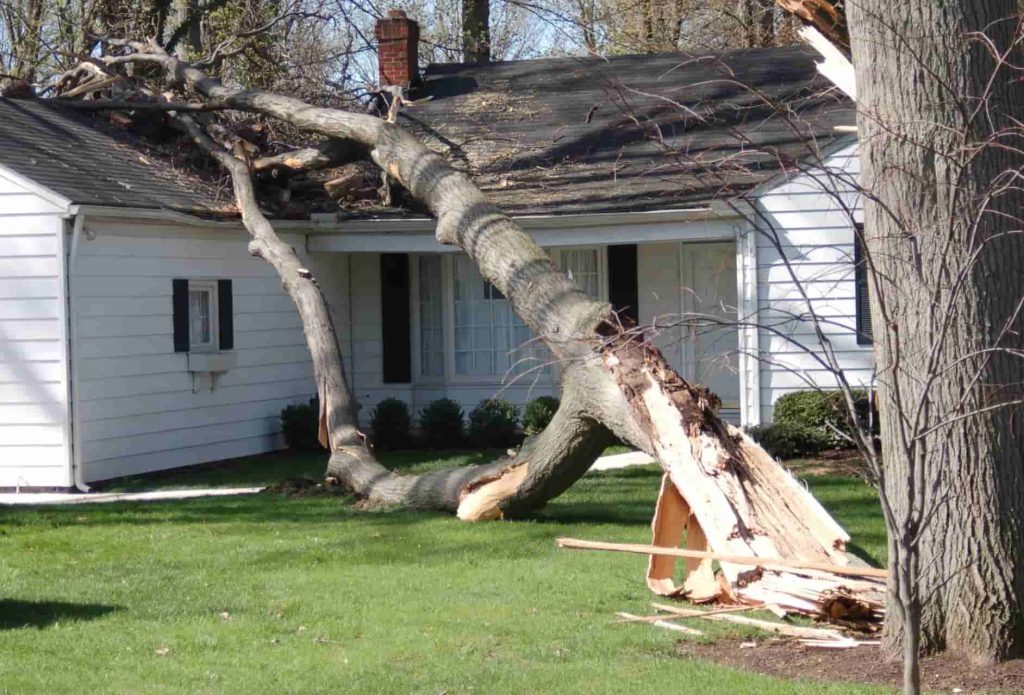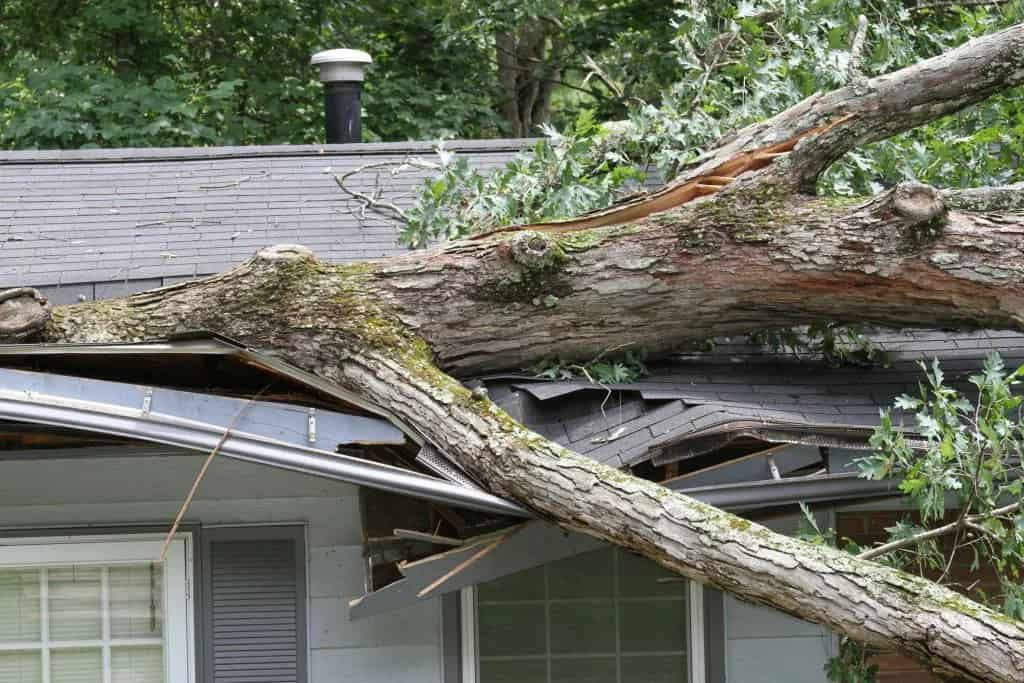A roof storm damage assessment is more than a routine check; it’s a comprehensive evaluation of your roof’s condition after severe weather events such as hail, windstorms, heavy rain, or ice accumulation. While a roof inspection often involves a visual survey of your roof, a professional roof damage assessment goes deeper, identifying hidden weaknesses, structural vulnerabilities, and potential points of water intrusion that could lead to costly repairs later.
Proper assessment helps homeowners make informed decisions about repairs, insurance claims, and preventative maintenance. By understanding the difference between an inspection and an assessment, you can protect your home and ensure long-term roofing integrity.
Roof Inspection vs Assessment
| Feature | Roof Inspection | Roof Damage Assessment |
| Scope | Visual check of shingles and flashing | Comprehensive evaluation including attic, moisture, structural integrity |
| Purpose | Routine maintenance | Detailed report for repairs and insurance claims |
| Performed by | Homeowner or professional | Certified roofing contractor |
| Tools | Ladder, binoculars | Drones, infrared scanners, moisture meters |
When to Schedule an Assessment:
- After a major storm or hurricane
- When shingles are cracked, curling, or missing
- Evidence of leaks in the attic or ceiling
- Water stains, mold, or mildew growth
FRS Roofing specializes in professional roof damage assessments, providing accurate reports, photos, and recommendations tailored to your home’s specific needs.
Common Types of Storm Damage to Roofs
Storms can affect your roof in multiple ways, and identifying the damage type helps determine the repair method and urgency.
Damage Types & Visual Signs
| Damage Type | Signs | Risks |
| Wind Damage | Missing or lifted shingles, torn flashing, dented vents | Water infiltration, additional shingle loss, weakened roof structure |
| Hail Damage | Bruised shingles, granule loss, dents on metal flashing | Reduced lifespan of asphalt shingles, leaks, possible insurance claims |
| Water Damage | Stains on ceilings, sagging sections, mold in attic | Structural weakening, mold proliferation, potential indoor air quality issues |
| Debris Impact | Branch marks, leaves clogging gutters | Roof punctures, water pooling, gutter blockages leading to water damage |
Storm Damage Severity Guide
| Severity | Visual Indicators | Urgency | Recommended Action |
| Minor | Few shingles missing, small debris on roof | Low | Conduct DIY inspection, schedule minor repairs if needed |
| Moderate | Multiple lifted shingles, slight water stains | Medium | Professional assessment recommended, repair within 1–2 weeks |
| Severe | Large shingle loss, structural sagging, active leaks | High | Immediate professional roof repair & insurance claim |
By understanding severity levels, homeowners can prioritize repairs and avoid further damage or higher costs.
Step-by-Step Roof Storm Damage Assessment Process

A professional roof damage assessment process ensures thorough evaluation and documentation for both repair planning and insurance purposes.
1. On-Site Inspection
The first step is a careful walk-around of the roof, assessing shingles, flashing, gutters, chimneys, and vents. Professionals look for subtle signs of damage, like hairline cracks or minor lifting shingles, which might not be noticeable to an untrained eye. Photographs and videos are taken for records, which also help in insurance claims.
2. Attic & Interior Check
Damage isn’t always visible from the outside. Inspecting the attic can reveal water stains, wet insulation, mold, or sagging roof decking, all of which indicate serious damage. Early detection prevents costly structural issues later.
3. Moisture & Leak Testing
Using moisture meters and infrared scanning tools, professionals can detect hidden leaks inside walls or under roofing materials. This technology ensures that even small areas of water intrusion are addressed before they expand.
4. Assessment Report Creation
A detailed report is compiled, including photographs, descriptions of damage, severity ratings, and recommended repairs. This document serves as both a guide for homeowners and as official evidence for insurance claims.
How to Safely Inspect Your Roof After a Storm
Homeowners can take certain steps to check for damage without risking injury.
DIY Roof Inspection Tips
- Ground-level check: Look for missing shingles, broken vents, or debris scattered on the ground.
- Gutter examination: Ensure downspouts and gutters aren’t clogged with leaves or branches.
- Attic inspection: Check for water stains, mold, or wet insulation that indicates leaks.
When to Call Professionals:
- Steep or multi-story roofs
- Signs of structural compromise
- Extensive wind or hail damage
Learn more safety tips in Can You Stay Home While Your Roof Is Being Replaced?.
Cost Factors in a Roof Damage Assessment
The cost of a roof damage assessment depends on several key factors:
| Factor | Impact on Cost |
| Roof size | Larger roofs require more labor and time |
| Material | Asphalt shingles are cheaper to inspect than slate or metal |
| Storm type | Hail or windstorms may require specialized equipment |
| Accessibility | Steep or multi-story roofs increase labor and equipment costs |
Average Cost Range: $150–$500 for a professional assessment, with higher-end costs for large or difficult-to-access roofs.
Filing a Storm Damage Insurance Claim
A storm damage insurance claim can help cover roof repair costs, but proper documentation is crucial.
Step-by-Step Process
- Take clear photos and detailed notes of all damage.
- Schedule a professional roof assessment to verify damage.
- Submit your claim with supporting documentation to your insurance provider.
- Review the adjuster’s inspection report carefully.
- Approve roof replacement based on professional recommendations.
Common Mistakes:
- Delaying filing after the storm
- Submitting incomplete documentation
- Starting DIY repairs before claim approval
Professional vs DIY Roof Repairs
Storm-damaged roofs require expertise to repair safely and effectively.
DIY Risks:
- Improper repairs can worsen leaks
- Personal injury from falls
- Insurance may deny claims if repairs are unverified
Professional Advantages:
- Certified workmanship
- Warranty coverage
- Comprehensive safety assessment
Contact FRS Roofing for certified storm roof repairs.
How to Protect Your Roof from Future Storm Damage

Preventive measures can extend roof lifespan and minimize storm damage risk:
- Seasonal inspections: Conduct checks in spring and fall
- Impact-resistant shingles: Protect against hail and wind damage
- Gutter cleaning and maintenance: Prevent water accumulation and leaks
- Roof sealing and flashing upgrades: Reinforce weak areas
Tools and Technology Used in Professional Roof Assessments
Modern technology makes assessments more accurate and safer:
- Drone Inspections: Capture detailed high-resolution images without risk
- Infrared Scans: Detect moisture hidden beneath shingles
- Moisture Meters: Identify leaks inside the roof deck or attic
These tools provide reliable, actionable data for repairs and insurance claims.
When to Replace Your Roof After Storm Damage
Not all damage requires replacement. Consider roof replacement after storm if:
- Multiple shingles are missing or damaged
- Structural integrity is compromised
- The roof is approaching its lifespan
Roof Lifespan Examples:
- Asphalt: 20–30 years
- Metal: 40–70 years
- Slate/Tile: 50–100 years
Why Choose FRS Roofing for Your Roof Damage Assessment
FRS Roofing offers certified storm damage roofing services, including:
- Professional inspections with detailed reports
- Assistance with insurance claims
- Local expertise and years of experience handling storm damage
Frequently Asked Questions
Q1: How soon should I assess my roof after a storm?
A: Within 24–72 hours to prevent additional damage.
Q2: Can I do a roof storm damage assessment myself?
A: Minor inspections are okay, but professional assessments provide more accuracy and safety.
Q3: What types of damage do storms typically cause?
A: Wind, hail, water leaks, and debris impact.
Q4: How much does a professional assessment cost?
A: Typically $150–$500 depending on roof size and damage severity.
Q5: Will insurance cover storm damage?
A: Yes, if documented professionally and filed promptly.
Q6: Can I repair my roof myself after a storm?
A: Minor repairs are possible, but professional help ensures warranty coverage and safety.
Q7: How can I prevent future storm damage?
A: Regular maintenance, impact-resistant shingles, and seasonal inspections.
Conclusion
A professional roof storm damage assessment protects your home, ensures insurance coverage, and prevents costly repairs. FRS Roofing provides accurate, detailed inspections and certified repairs, giving homeowners peace of mind.
Action: Schedule your professional roof storm damage assessment with FRS Roofing today.

